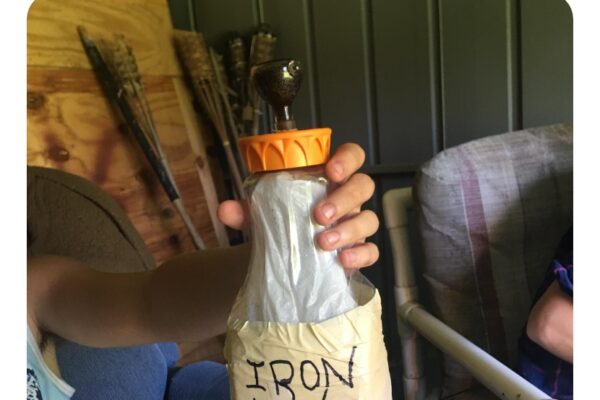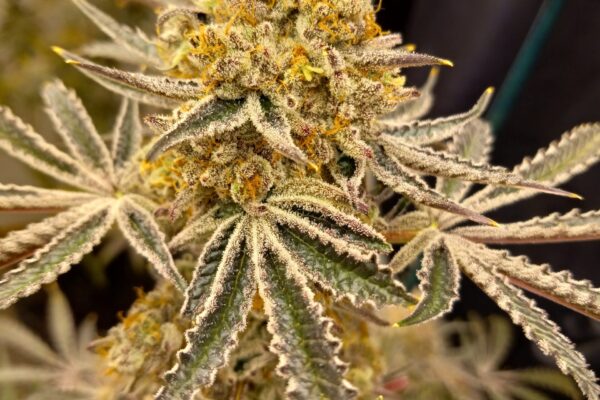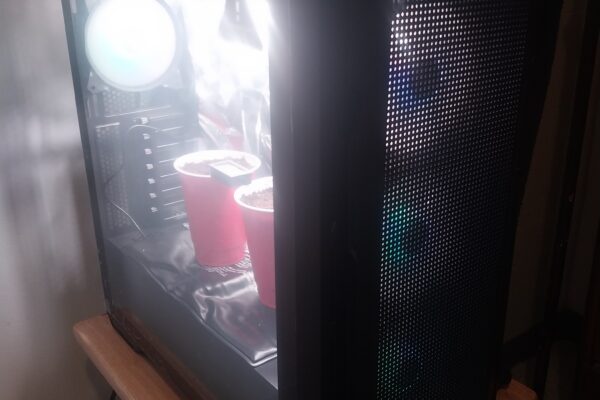Your cart is currently empty!
Sexing. Pre-flowers. Hermies. Nanners. Sinsemilla. Cloning for sex, all explained. By TheCapn.
“Jorge, dame un poco de ese buen mota sinsemilla! Tu sabes, esa mierda que obtuvo de su hermano.”
In english: “Give me some of that good weed, without seeds. You know, that shit you got from your brother.”
We all want to grow weed with NO SEEDS (sinsemilla). So here is what you need to know. In this article, I’ll show you how to determine the sex of your plant. We will see “pre-flowers” (beginning of female pistils or male pollen sacks). We will also talk about what a “hermie” is, and what to do if you get a hermie.
Cannabis is “dioecious”, which means there are male and female plants. In short, a female cannabis plant cannot reproduce without the help of a male plant. Other plants, such as tomatoes and cucumbers are monecious, (one plant has both male and female organs on it). For example, a single tomato plant can pollinate itself, producing fruit. As you know, male cannabis plants do not produce bud. And if they pollinate our females, then the female starts making seeds, instead of making large buds. Just a tiny whiff of pollen can litter your bud with hundreds of seeds. So, we want to remove males from the grow room as soon as we detect them.
I’m an impatient person, and that’s a bad thing when you’re a grower. It is very true that “nothing good happens quickly” in this hobby. When I start new seeds, I get anxious to know if they are males or females.
During the first month of vegetative growth (18 hours light / 6 hours darkness), when your plant it still very immature, it is difficult to determine sex. After putting the plant into flower (12 hours light, 12 hours darkness), females will usually show sex within a week, males, a little longer. Here are a couple common methods to determine the sex of your plant:
“Cloning for sex”:
After about 4 weeks of vegetative growth, some people take cuttings (clones), root them, and then put them into 12/12 light cycle, and wait for sex to show on the cloned plant. Then, they know the sex of the parent. This method is usually a huge waste of time.
“Re-vegging”:
Some people put their plant into 12/12, wait for pre-flowers to show, and then quickly put females back into 18/6 to allow them to grow bigger before flowering. This is a sure way to stress a plant and prolong the time it takes to get to harvest.
“The Captain’s way”:
After planting seeds, I grow out my plants as usual, and I wait. After 40 days from seed, I start checking for females. The soonest I’ve seen a pistil (sign of a female) is 40 days. The longest I’ve seen a female wait before showing me a pistil is 55 days. Sometimes we can “predict” the sex (by the presence of a calyx) before we even see that pistil. I’ve taken several photos to give you an idea of what to look for.
We want to look right in the “armpit” of the stem of the fan leaf. Remember, the “spike” looking things we see at the nodes are on both males and females, and these have nothing to do with sex.
You will need a jeweler’s loupe. You can get them on ebay for about $4. Search ebay for “30 x loupe”

When a male pollen sack starts to grow, it starts off as a round-ish bump. You see the “nub” here? It’s basically a little bump. The bump is NOT pointed. This plant could be a male or female, too soon to tell.

Here is another bump. This is probably a male.

Now lets take our jeweler’s loupe and look closely at a couple more. When a female calyx forms, it is tear-drop shaped / pear shaped, but even before it gets to that pear shape, you can usually tell it apart from a male because it is pointed:


Every strain I’ve grown has behaved the same way. There is no reason to go through the trouble of cloning / re-vegging. Just be patient and it will show. Here’s a closeup:

Now, let’s talk about the term “HERMIE”.
You’ve probably heard the term “hermie”. Stoner talk: “Dude! My plant hermied on me!” (Stoners use nouns, as verbs. “I PH’ed my water.”)
It is a rare case to find a TRUE monecious (hermaphrodite) cannabis plant. So why do we hear so many people talking about “hermies”? Cannabis plants are known to produce male pollen sacks when they are under stress. They do this as they attempt to “reproduce” on their own. In some cases, female plants will produce their own pollen sacks. When the sacks mature and open, they will pollenate themselves, and everything else in the nearby area. Some strains are more prone to this than others, but this is often caused by grower error. An inconsistent 12/12 light cycle is a common cause.
Let’s take a look at a “hermie”, or a female that has produced a pollen sack:

Now that’s UGLY! This can be a nightmare for a grower with a large flower room.
What to do when you find a “hermie”:
Option1: If you have many small plants in flower, I suggest the following action. There may be more pollen sacks on the same plant that you don’t see. Spray the entire plant with water (water kills the pollen and keeps it from going airborne) then take the plant out and dispose of it.
Option 2: If you have only a couple large plants: You can look carefully at the plant, spray pollen sacks with water, then remove the pollen sacks from the plant. Note: you will miss some pollen, and you still could get seeded bud (consemilla) in the end.
Option 3: Use a product like “dutchmaster reverse”. This product kills the pollen sacks and prevents them from opening and pollinating your room.
If you are confident that you babied your plants and gave them then optimal conditions, then you may have a strain (phenotype) that is prone to growing male pollen sacks. Throw any clones from that particular mother (phenotype) away. If you subjected your plants to stress by accident, then you may grow the same strain again, or clones from this pheno, and never see another pollen sack. Some strains are so resistant to “hermie-ing” that they will won’t grow pollen, even under extreme stress.
Just when you’ve thought you’ve heard enough stoners terms for one day:
What is a “Nanner”?
A “nanner” is a pollen sack that grows, embedded into the bud. You might find these near the top of the plant, right in the buds. “nanners” are simply pollen sacks (look like tiny cluster of bananas) that form in late flower. They grow near the end of the plant’s life. Again, this is mother nature’s way of attempting to pro-create.

What to do if you find a “nanner”?
Nothing. Don’t worry about it. In most cases, the pollen sacks don’t have time to mature and they never open. If they do, it is usually too late for your female to become pollinated anyway. Unless, of course, you have other females in the flower room at an earlier stage of flower. Again, late flower pollen sacks are more prevalent in certain strains. If they cause a problem, don’t grow that strain again.
Henry Wu: You’re implying that a group composed entirely of female animals will… breed?
Dr. Ian Malcolm: No, I’m, I’m simply saying that life, uh… finds a way.
Thanks for reading, and come back to the DudeGrows.com for more free MJ grow knowledge.
Comments
-
Great photography!
-
Thanks for putting the info up for all of us to see! I’m sure you will save a lot of people a lot of time!
-
Thanks a lot Capn for taking the time to clarify all that, I wanted to let you guys know I’ve started using Recharge in place of Great White and will let ya’ll know how it works for me.
-
THanks a lot for t his information it sure helps I just bought a dewy mister to Clone and sex the plants now I don’t have to. and I could just use the Mr for Clone in the future. just another reason to donate my
$4.20. C u pay day. -
First time growing. Its day 60 and I can definitely tell I have a female. Do I change light cycle and start flowering???
-
>>>First time growing. Its day 60 and I can definitely tell I have a female. Do I change light cycle and start flowering?
That’s up to you. If you are 60 days from seed, your plant is probably pretty good size by now. If you are seeing pistils, you know your plant is getting mature and ready to flower.
-
-
@THECAPN
Thank you for sharing this info.
Looking for more from you ! 🙂
You save lot of people’s time
I am glad i found you back again-
>>You save lot of people’s time
Glad to have you along, altainta
-
-
I read / study anything i can about the wonderful world of weed (WWW.)
I recently read Somas book and he talks about selfing a plant to produce seeds.
I had a go with some kosher Kush but the results were inconclusive. I think this strain is Hermi/nana prone so i am reluctant to pop the beans from this experiment .
PLus any good book reviews
-
thanks man.. my first time sexing plants as i usually use clones. .ghanks for the bump and the teardrop analogy. . Really helped me alot to determine preflower.. for u readers there is now a company that can determine sex through a test.. u just send them a leaf.. its called gen test.. thanks again
-
When the pre flowers are still too small to differentiate but they start to appear in “clusters”, is this a definite sign of a male plant?
-
Unfortunately, yes. . The pollen sacs will become clusters. Hopefully I’m wrong, however, it’s what I’ve learned. I just realized the date of the question so, if you get this could you share the result?
-
-
thank you! I had to look up exactly wtf!? nanners is. Thanks for the explanation! 🙂
MC
Recent Posts
First time grower needs help!!!
I have been watching the DGC for quite a while now, not a patreon yet but very soon! I…
Dude Grows Show 1631
What’s Growing On DGC? The Dude and Scotty are Hanging Out Talking Cannabis News, Culture and Growing. https://open.spotify.com/episode/0yS6jok54qSAap0lR9hl6P?si=ec4a2078a2724dab THIS…
Wildberry Cake
Wildberry Cake got sliced
Thank You Grambo!!
You guys gave me this idea. Well more or less Grambo. There was an episode you guys were talking…
Tangie Ripper
Chopped at day 63, Tangie Ripper from Irie Genetics. This was my first run of this strain and I…







Leave a Reply
You must be logged in to post a comment.